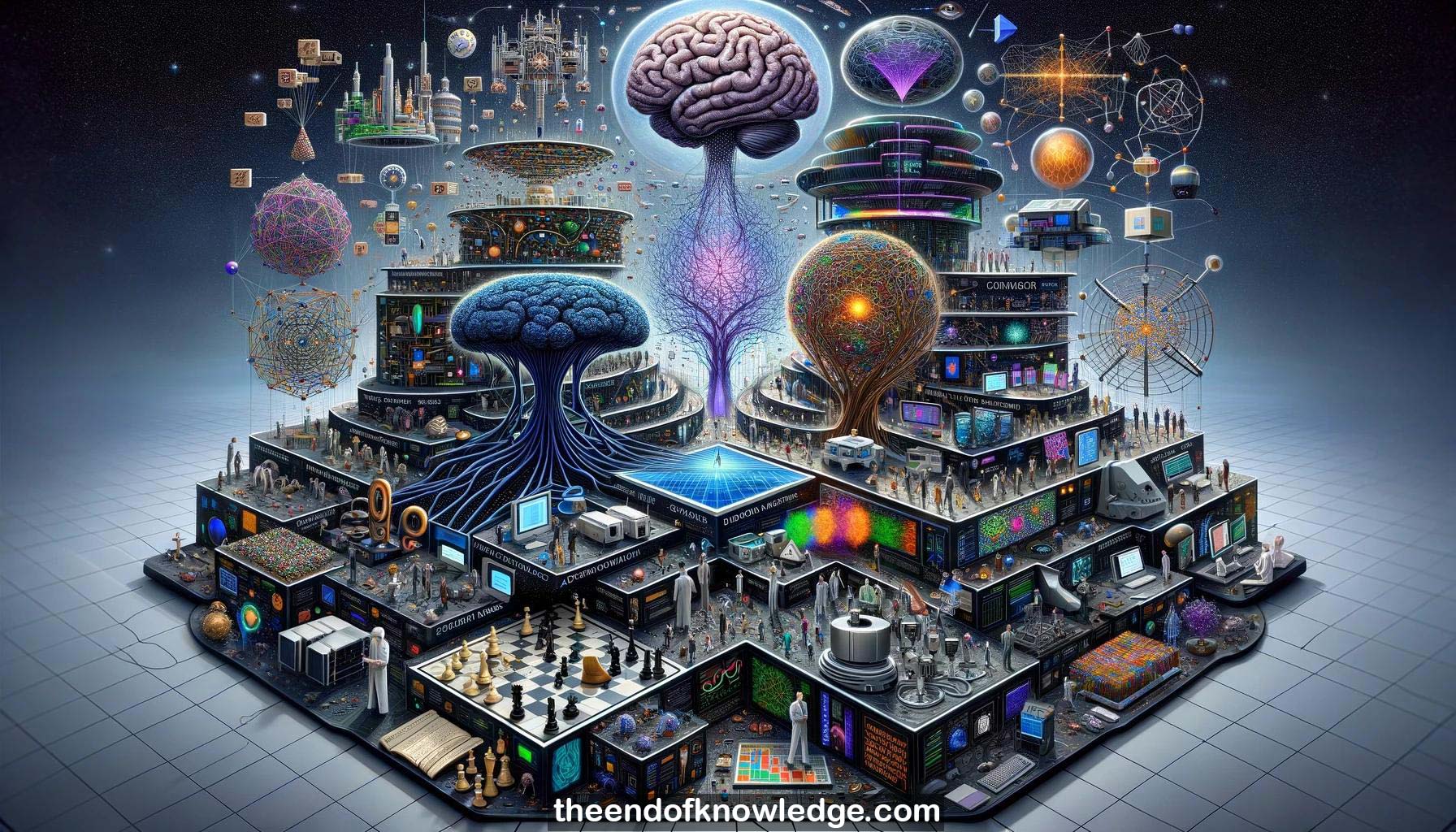 >
>
Concept Graph & Resume using Claude 3 Opus | Chat GPT4 | Gemini Adv | Llama 3:
Resume:
1.-Chris Manning discusses designing neural networks for higher-level cognition and reasoning tasks beyond just intuitive stimulus-response.
2.-Current deep learning successes are in instinctive tasks for humans; reasoning requires careful deliberate thinking.
3.-Reasoning defined as algebraically manipulating acquired knowledge to answer new questions. Composition rules are central.
4.-Manning argues for using appropriate but flexible structural priors as inductive biases to enable effective learning.
5.-Tree-structured models provide good inductive bias but are hard to optimize. Attention offers an alternative.
6.-The goal is encouraging compositional multi-step reasoning in neural networks while maintaining differentiability and scalability.
7.-The CLEVR dataset tests visual question answering requiring reasoning about object attributes, relations, numbers.
8.-CLEVR examples include functional programs specifying reasoning steps to answer the question.
9.-Previous CLEVR approaches used strong supervision of functional programs or specialized layers in ConvNets.
10.-Memory, Attention and Composition (MAC) networks are introduced for multi-step reasoning.
11.-MAC networks use a versatile recurrent MAC cell to adapt behavior for different reasoning operations.
12.-MAC cells have separate control and memory states. Control extracts instructions, read retrieves information, write updates memory.
13.-Attention is used extensively in MAC networks to maintain differentiability while simulating complex reasoning.
14.-The question is encoded with an LSTM. The image is encoded with a ResNet as the knowledge base.
15.-The control unit attends to question words to compute a time-specific query representation.
16.-The read unit relates items from the knowledge base to the previous memory and control to retrieve information.
17.-The write unit can use a simple linear layer or more complex highway or self-attention mechanisms.
18.-MAC networks are fully differentiable end-to-end models for multi-step reasoning.
19.-On CLEVR, MAC networks achieve 98.9% accuracy, more than halving previous state-of-the-art error rates.
20.-MAC networks learn much faster than alternatives, performing well even with 1/10 of the training data.
21.-On the CLEVR-Humans dataset testing transfer to human-authored questions, MAC networks outperform other approaches.
22.-Attention distributions in MAC networks help interpret the reasoning steps being performed on the question and image.
23.-MAC networks differ from neural module networks by using one universal cell rather than specialized modules.
24.-MAC networks benefit from separating control and memory and using attention rather than conditional normalization as in FiLM.
25.-The talk argues for designing neural architectures with inductive biases for reasoning as a challenge for the community.
26.-Potential limitations are that MAC networks decide reasoning steps regardless of retrieved information.
27.-Allowing memory to influence future control could help for knowledge-driven reasoning.
28.-The attention distributions aid interpretability of the reasoning steps but still have limitations.
29.-Generating textual explanations alongside the reasoning is a possible direction for improving explainability.
30.-The talk aims to spur more research into neural building blocks for higher-level inference and reasoning.
Knowledge Vault built byDavid Vivancos 2024